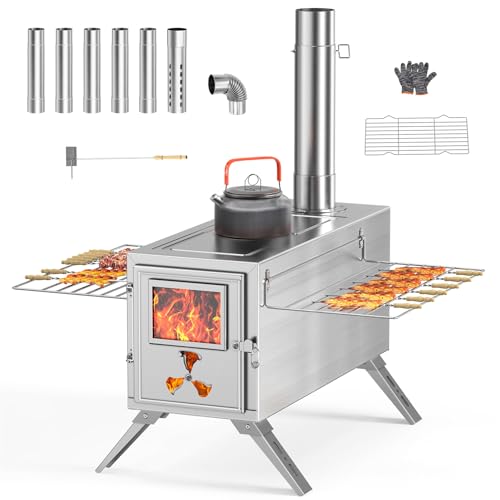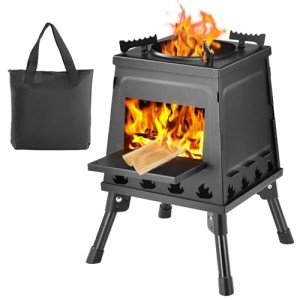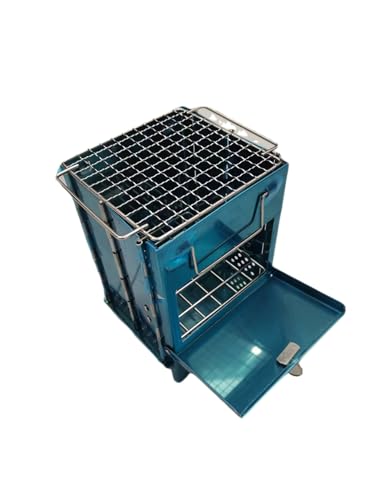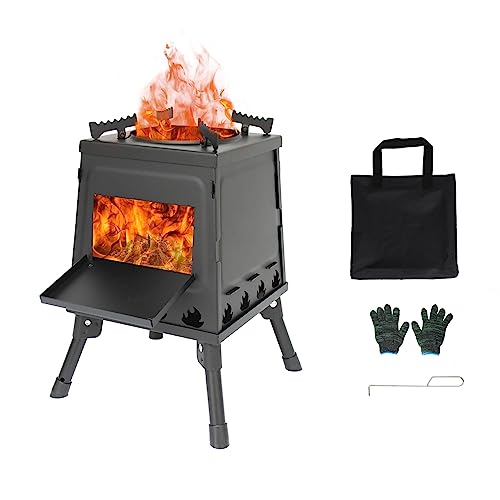Camping offers a unique opportunity to reconnect with nature while enjoying a break from the hustle and bustle of everyday life. A significant part of this experience involves food preparation, which can be challenging without the right equipment. For avid campers, a portable wood burning stove can be a game changer. These stoves are not only environmentally friendly but also efficient, compact, and easy to use. This guide delves into the advantages of using a portable wood burning camping stove, various types and their accessories, and answers some frequently asked questions for campers considering this gear.
Advantages of Portable Wood Burning Camping Stoves
-
Eco-Friendly: Unlike traditional propane or gas stoves, wood-burning stoves rely on natural materials, making them a sustainable choice. Campers can often find twigs and small branches in the area, reducing their carbon footprint.
-
Cost-Effective: After the initial purchase, wood is generally much cheaper than propane or other fuels. In many cases, the cost of running a wood stove can be significantly lower, especially for longer camping trips.
-
Fuel Versatility: These stoves can use various biomass materials, including sticks, pine cones, and leaves, giving campers flexibility in sourcing fuel.
-
Durability: Many wood burning camping stoves are built from robust metals such as stainless steel or titanium, which are designed to withstand the elements. These stoves often last for years, providing long-term value.
-
Performance: When set up correctly, wood burning stoves can produce high heat, making them suitable for cooking various meals, boiling water, or even heating small spaces.
Types of Portable Wood Burning Camping Stoves
When it comes to choosing a portable wood burning camping stove, there are several types available, each with unique features:
1. Traditional Wood Burning Stoves
- Design: Often made from heavy-duty metals, these stoves have a compact design suitable for cooking and heating.
- Pros: More stable and generally have a larger cooking surface.
- Cons: Heavier and bulkier, which might be less ideal for backpacking.
2. Cylinder Stoves
- Design: Round or cylindrical in shape, these stoves tend to be lightweight and easy to carry.
- Pros: Their shape allows for efficient heat distribution.
- Cons: Limited cooking area compared to traditional designs.
3. Rocket Stoves
- Design: Characterized by a vertical combustion chamber, rocket stoves are designed to burn fuel efficiently, producing high heat with minimal smoke.
- Pros: Fuel-efficient; burns hotter and longer.
- Cons: Requires a specific setup and more care during cooking.
4. Foldable/Collapsible Stoves
- Design: These stoves can be assembled and disassembled easily, making them perfect for backpacking.
- Pros: Extremely portable and lightweight.
- Cons: Smaller cooking area and may require more frequent refueling.
Essential Accessories for Your Camping Stove
To get the most out of a portable wood burning camping stove, it is wise to invest in some accessories that can enhance your cooking experience. Here is a list of essential items:
Cooking Accessories
- Cooking Pots and Pans: Choose lightweight, portable cookware made from materials like aluminum or titanium for efficient heat conduction.
- Grate for Grilling: A durable grate can allow for direct cooking over the flames, perfect for grilling meats or vegetables.
- Fire Safety Gear: Campfire gloves and an aluminum shovel for managing hot ashes are critical for safety.
Fuel Accessories
- Fire Starter Kits: A good kit will include waterproof matches, fire starter sticks, or flint and steel for easier ignition.
- Storage Bags: Having a dry bag for collecting and storing fuel can keep everything organized and prevent moisture damage.
Additional Tools
- Multi-Tool/Swiss Army Knife: A versatile multi-tool can assist in food preparation and handle small repairs.
- Portable Cooler: If your trip allows, having a cooler ensures that perishables stay fresh.
- Camping Utensils: Don’t forget a set of lightweight utensils for cooking and eating.
FAQs
1. Are wood burning camping stoves allowed in all campgrounds?
In many campgrounds, wood burning stoves are allowed, but it’s essential to check local regulations and fire bans. Some areas have restrictions to prevent wildfires.
2. How do I clean my portable wood burning stove?
After use, wait until it cools down. Remove ashes and debris using a small brush or cloth. For deep cleaning, inspect the stove for any soot buildup and use appropriate cleaning agents.
3. What type of wood is best to burn?
Hardwoods, such as oak or hickory, burn longer and hotter than softwoods. However, for quick fires, softwoods like pine are suitable as they ignite faster.
4. How can I maintain my wood burning stove?
Regular maintenance includes cleaning after trips, checking for rust or damage, and ensuring that all components function correctly.
5. Are there any alternatives to wood for fuel?
Yes, some wood burning stoves can also burn biomass pellets or even certain types of paper. However, always check the manufacturer’s guidelines before using alternative fuels.
A portable wood burning camping stove is not just a cooking tool but a versatile companion for outdoor adventures. Its numerous benefits, coupled with a variety of models and accessories, make it an excellent choice for campers looking to enhance their outdoor cooking experience. By choosing the right stove and necessary accessories, one can enjoy delicious, warm meals in the heart of nature while committing to sustainable camping practices. With the tips and insights shared in this guide, camping enthusiasts can now make informed decisions, ensuring their next trip is both enjoyable and memorable.






